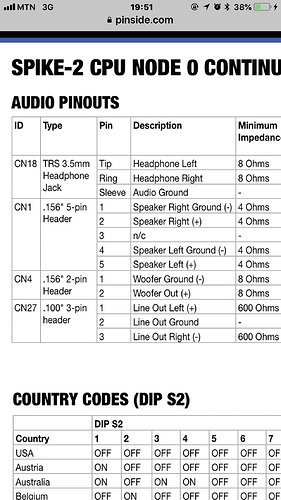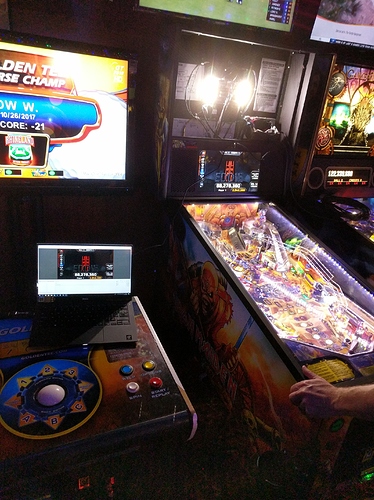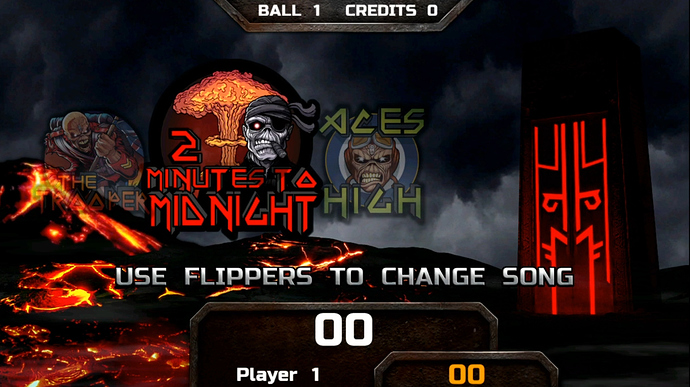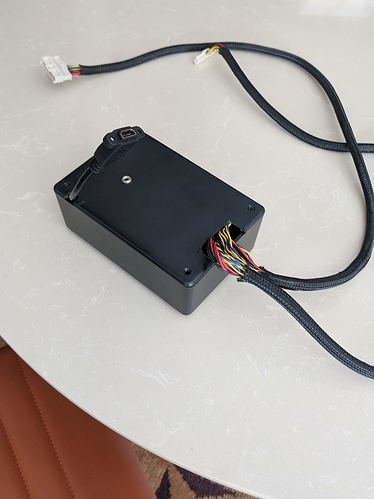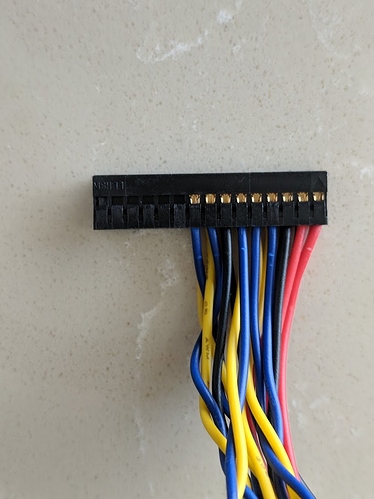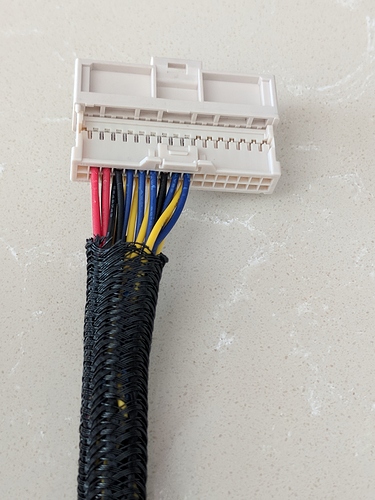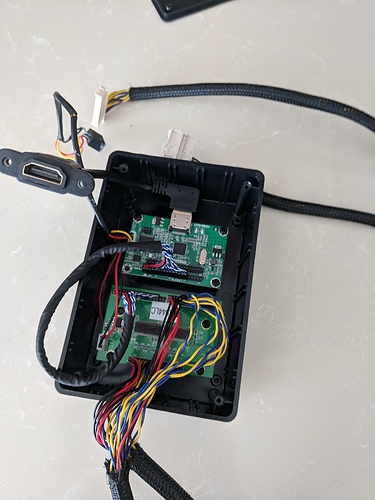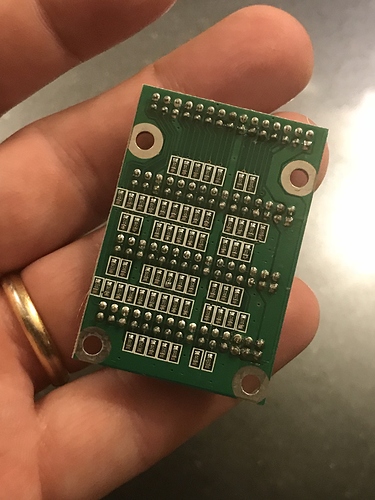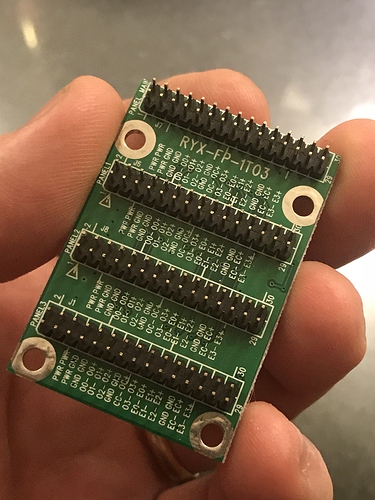They are on the main board in the backbox.
Actually stern seem to have made it more complex on that you need a small board that enables headphone control - that they want $100 for! It connects to this
I might have a go at wiring it direct and see what it gives… as the stern part uses the dollar bill slot which we dont have in the U.K.
I’m using the headphone out on my GB which is spike 1 for streaming and it works great.
I imagine it would be line level and you wouldn’t want to plug most headphones directly into that without some sort of attenuation. If this is the case, there are a boatload of simple DIY headphone amp designs (I’d look at the Cmoy project probably) that could be built on some perfboard and mounted to the coin door for about $20.
I think the goal here was streaming rather than offering headphones, so line level ends up being a win over an amplified output.
try this encoder:
I’ve managed to use a lot of bizarre resolutions with it, not sure if it will work with the resolution you need but it works with the output resolution of the CGC HDMI out on AFMR (and pretty sure It will work with MMR too). It also does DVI in which is useful for Alien (lol)
Is the screen that Stern uses standard (!) LVDS pins for input?
Neil.
Hell yeah dude!
I can offer zero help on this since I’m a tech idiot, but my capture box also occasionally blinks the screen, but that does not show up on stream. I’m puling my signal off of the spike board, which supplies us with a super clean picture.
HOT TAKE: Things are being done to make this easier.
Success!
The issue I had earlier was that I incorrectly ordered the dual channel version of the LVDS-to-HDMI converter. This is the default version they ship to you, and it is designed for 1920x1080 output. You have to specifically ask to order the single channel (“Single-8”) version that will properly convert the 1366x768 output. I was able to capture the output with an Elgato Cam Link without issue. The splitter also splits the video so you maintain the normal display on the actual game itself. You can snake the HDMI cable out of the game, close it up, and capture that perfect stream quality. 
Happy to share this with everyone out there, it was a lot of work, but perhaps it’s helpful to someone else.
Awesome! Would love to get this setup for our bar arcade streams. If it’s not too much trouble would love to get the details.
Should I just run with that stuff you detailed in a previous post?
Yeah, the stuff I detailed earlier, just make sure you get the single channel version of the LVDS->HDMI converter board. I’ll put everything I used here for good measure:
- LCDParts.net MS541LC LVDS Splitter
- Geekworm Single-8 LVDS-to-HDMI Adapter Board Be sure to specifically ask for the single-channel (“Single-8”) version! They ship the dual-channel version unless you specifically ask for the single channel version.
- LCDParts.net 30-pin LVDS cable to connect the splitter board to the HDMI converter board.
- Molex 501646-3400 and Molex 501876-3440 connectors to connect to the video port on the Spike2 board, and the convertor to the display.
- Crimps for the above connectors
- JST PHR-4 connectors for power to the splitter and (optionally) audio to the HDMI converter.
- 3.5mm audio jack (optional, connect to game’s audio out, we use it with a headphone kit)
- Some 28 AWG wire for making the LVDS, power, and audio cables.
The hardest part is making/repinning the LVDS wires with the molex connector on the end to connect to the Spike board. Possibly you can just get away with a standard LVDS cable, but it would not attach firmly for me. I think it’d be super easy if I could buy an extra Spike2 display cable assembly – is there anywhere that sells replacements?
I haven’t done the full all-night stream trial-by-fire yet (probably next week), but initial tests seemed good. If I build another one, I’ll try to take step-by-step pics.
Excellent  well done
well done 
so about $120 of material per machine then?
Nice work dude!!!
I’m gathering everything I need to capture a new Stern game. I already ordered the LVDS to HDMI converter. I was wondering if you guys think this cheaper LVDS splitter would work? @mwelsh
Seems like it’d work! Definitely worth a shot because it’s way cheaper. The pins match up with the LVDS-to-HDMI converter. It doesn’t look like it requires external power either, which saves an annoying step.
Here are some pics of it all (plz don’t laugh at my clumsy enclosure  )
)
^ This side plugs into the Spike board. Notice that the far right pins are open – the Spike LVDS connection is shifted one pin to the left from the “standard” connection that the splitter and converter boards use.
^ The other side plugs into the splitter. It’s not shifted to the left.
^ This wire plugs into the wire that connects to the LCD display. It’s the mirror image of the other wire, with pin 1 on the left, shifted one pin to the right. I was lazy and just snapped the male connector on top of the female. You can solder the wires directly to the male connector if you want.
^ The whole shebang.
Toss it in the bottom of the backbox, and then you can snake the HDMI cord out the top of the cabinet. There’s a plastic cap in the top of the backbox that you can pop out.
Some capture cards really disagree with the 1366x768 resolution of the video stream. Elgato Cam Link seemes to work, but not Elgato HD60S.
I brought the box with me to NWPC. That was the first time it got battle-tested with everyone tossing around GOTG for three days, it seemed to hold up.
it held up VERY WELL! thanks for helping out all weekend Mike! ![]()
okay, now sell the enclosure and cables and we will be good to go 
nice work. I’ll try the non-powered splitter. It most likely will not work, but we’ll see.
So on the cheap Alibaba splitter, they denied an order of two, even though the minimum order listed is 1.
As for the splitter from http://lcdparts.net, they are trying to charge almost $20 shipping. What the heck! I will probably have to bite the bullet and go this way.
You may be able to get away with some longer LVDS cables like this, but these didn’t seem to stick very well to the connector on the Spike board, at least for me.
Nice. Let me know if they work. I will hold off until I hear back.
